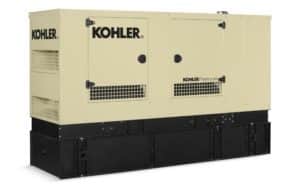Failure Scenarios: The Need for Data Center Redundancy
 Because there are a number of incidents that can cause power failure, disrupting essential functions and posing potential disaster for businesses, data center redundancy is a must. According to ComputerWeekly.com, “Redundancy in IT is a system design in which a component is duplicated so if it fails there will be a backup. In a data center there may be redundant components, such as servers, or network system components, such as fans, hard disk drives, operating systems and telecommunication links, that are installed to back up primary resources in case they fail.”
Because there are a number of incidents that can cause power failure, disrupting essential functions and posing potential disaster for businesses, data center redundancy is a must. According to ComputerWeekly.com, “Redundancy in IT is a system design in which a component is duplicated so if it fails there will be a backup. In a data center there may be redundant components, such as servers, or network system components, such as fans, hard disk drives, operating systems and telecommunication links, that are installed to back up primary resources in case they fail.”
Why Data Center Redundancy is Crucial
Some of the numerous types of failure scenarios that a data center can experience include:
- Component Failure: If a piece of equipment vital to the success of a data center, such as a disk drive or a power supply unit, is to malfunction, downtime may be unavoidable. However, by including redundant components such as backup power generators to the setup, component failure won’t be cause for alarm.
- Room Failure: If power distribution fails and the entire room is cut off, operations will cease. To achieve redundancy against this failure scenario, a building would need to house two data centers within separate rooms in which facility services are mirrored. Since creating two separate data center rooms would be extremely expensive as well as just not very practical, room failure is more often treated as site failure (see below).
- Building Failure: Events that would cause the entire building housing a data center to fail include a fire or flood. This is another situation which would typically be prepared for the same as site failure.
- Site Failure: Long-distance mirroring is a way to prepare for complete site failure. A separate facility with standby resources that can be switched over to when extreme conditions cause room, building or site failure will allow operations to resume as seamlessly as possible.
- City Failure: Extreme storms, large-scale power grid failure or even cyber-attacks could cause major disruption. Redundancy through full mirroring capabilities at the IT level will be required to resume data center functions at an external location.
- Regional Failure: Regional failure could be caused by a major natural disaster that affects a wide area, such as an earthquake, hurricane, or tsunami. Mirroring at another location in a different region is an option for this failure scenario.
- Country Failure: In an extreme situation that causes country-wide outages such as an epidemic outbreak or civil war, a co-location company may be able to provide a long-distance connection between facilities in different countries.
Whether in the form of duplicate piece of machinery, parallel systems of power generators, or mirroring at external facilities, redundancy is crucial to the success of data centers and the businesses that rely on them.

